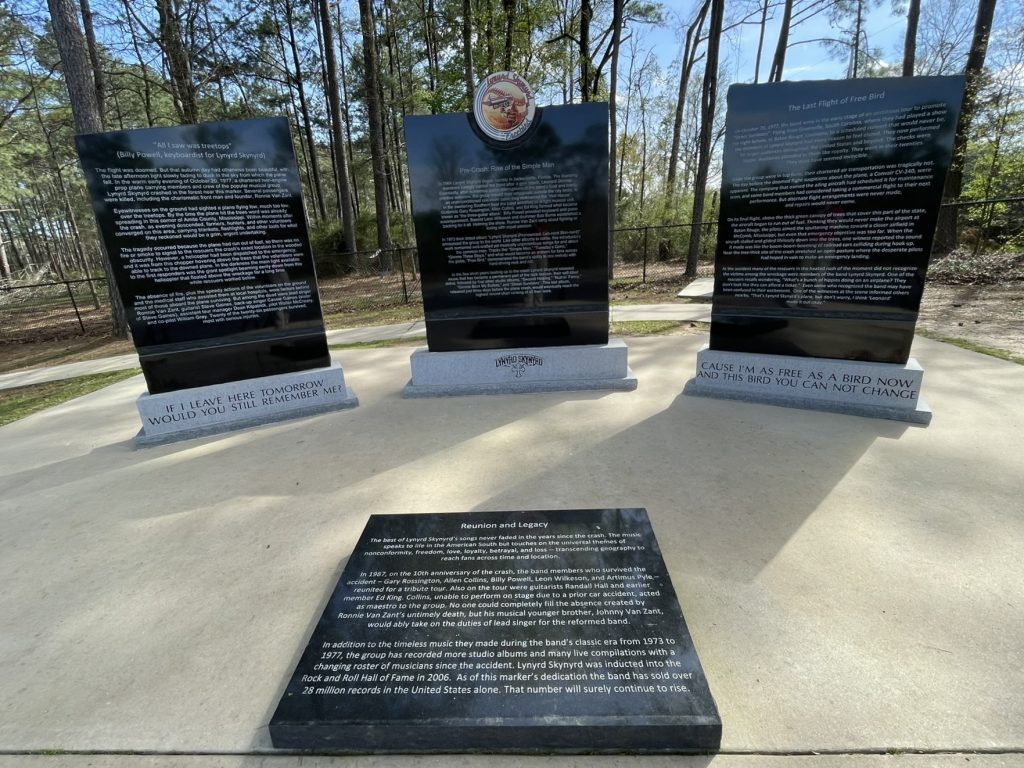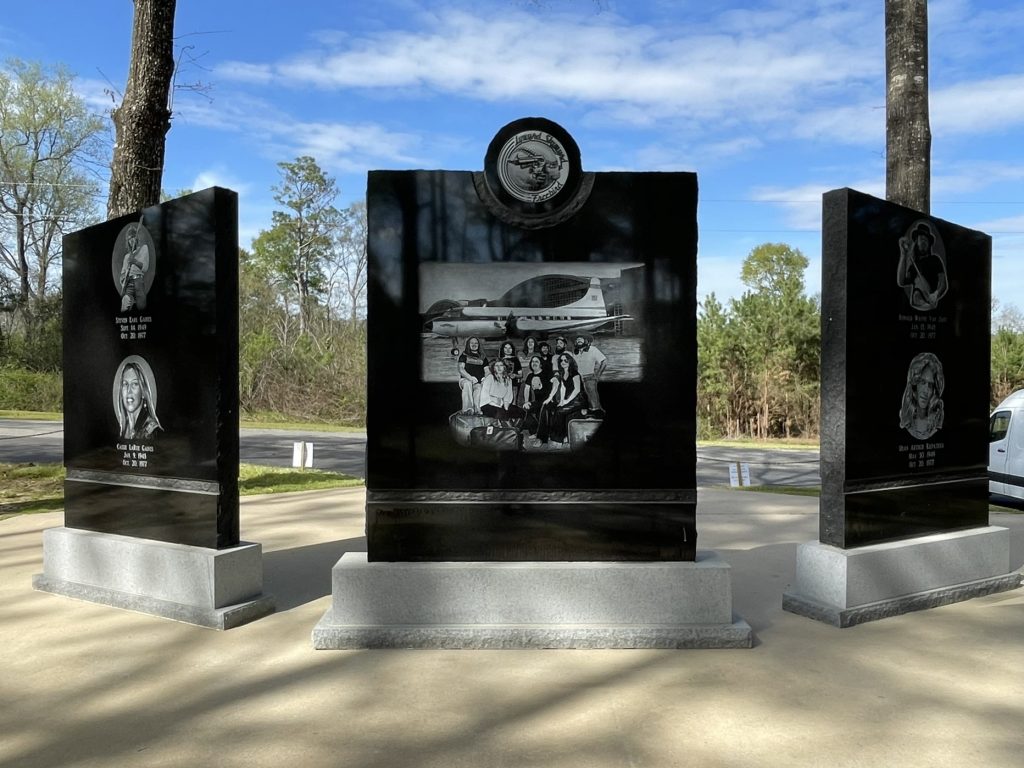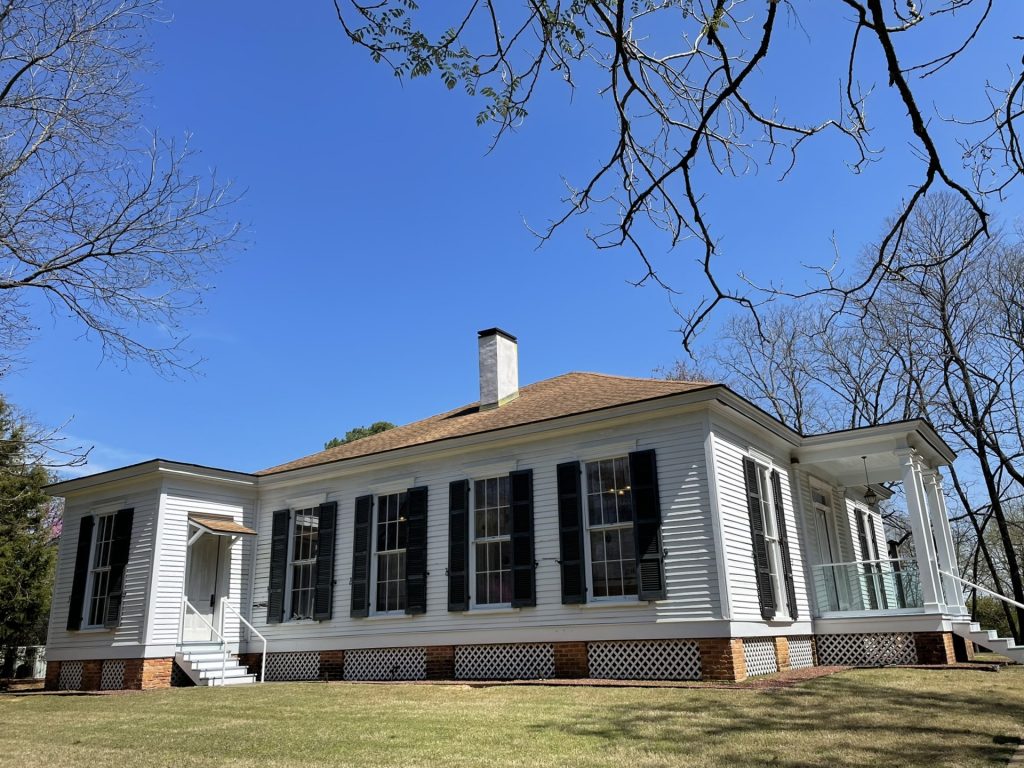

We detoured to Magnolia to visit the Lynyrd Skynyrd Memorial, which is near the site of the infamous plane crash. Doug deemed it a key moment in the history of rock-n-roll, and therefore worthy of a detour.
The crash occurred on October 20, 197,7 when the aircraft ran out of fuel and crashed into the woods. The band was flying from Greenville, South Carolina, to Baton Rouge, Louisiana, when the accident happened.
Of the 26 people on board, six died and all others were seriously injured.
The deceased band members and crew included lead vocalist and founding member Ronnie Van Zant; guitarist and vocalist Steve Gaines; backing vocalist Cassie Gaines (Steve’s older sister); and assistant road manager Dean Kilpatrick. Both pilots were killed as well, Captain Walter McCreary and First Officer William John Gray.
The tragedy put a stop to the band, but ten years later Van Zant’s older brother Johnny reformed the band with himself on vocals, and sounding eerily similar to his brother.








Bryant’s Grocery & Meat Market, then and now. I can’t say that I feel bad about its current state.
Ever since we visited the Atlanta History Center and saw their exhibit Emmett Till & Mamie Till-Mobley: Let the World See, I have wanted to visit sites associated with Emmett Till. We were able to see this statue in Greenwood, which is about eight miles south of where Emmett was visiting family for the summer in 1955.
It’s also near the village where Bryant’s Grocery & Meat Market was located — the place where everything started to go wrong. It was there that 14-year-old Emmett was accused of flirting with the white shopkeeper. Later that night her husband and his half-brother kidnapped, tortured, and murdered Emmett.
It was humbling and sobering to stand at this spot. I kept thinking, “he was just a boy.” I cannot understand this kind of hatred.
Unfortunately, the two Emmett Till centers in the area were both closed on the day we were passing through, so we will have to come back. We also want to pay our respects at the site where his body was recovered in Glendora.



I feel like a bait and switch happened with the L.Q.C. Lamar House Museum. We went because Lucius Quintus Cincinnatus Lamar is covered in a chapter in John F. Kennedy’s book Profiles in Courage, which features eight senators Kennedy felt had shown great courage while under pressure from their parties and constituents. We thought this sounded like our kind of man.
But as we walked through his home –– which is now mostly signboards with a few artifacts from his life –– it was clear that Lamar was a believer in slavery and the idea that black men were inferior to white. I kept thinking we’d come to a signboard where he had an epiphany and it all changed –– but no.
I had to do some research to find out why this man was in the book (which I haven’t read, but of course Doug has). I found an article in The Atlantic, which described Lamar thus: “A slaveholder, drafter of the Mississippi Ordinance of Secession, and Confederate colonel, Lamar later became the first ex-Confederate appointed to the Supreme Court after the Civil War.” Okay, we’re not missing anything.

Then it went on to say:
Profiles in Courage had relied heavily on the work of influential Dunning School historians—disciples of the Columbia University professor William A. Dunning, who scorned Black suffrage and promoted the mythology of the Lost Cause. Kennedy may have been genuinely misled by these historians, but he also aspired to higher office and needed to appeal to white southern voters. His book denounced Reconstruction, casting Ames as a corrupt, carpetbagging villain and Lamar as a heroic southern statesman. [Lamar’s rival Adelbert Ames was Mississippi’s governor during Reconstruction who was a very vocal supporter of Black Suffrage.]
Ugh. Well, at least we can be grateful the museum was free and we hadn’t given them any money. But the Lamar name is common on streets throughout the region, so he is held in esteem by many.


And finally, here’s some Mississippi-related music that came on my radar. It turns out country really does nothing for me.
Faith Hill, Mississippi Girl
Sugarland, Down In Mississippi (Up To No Good)




